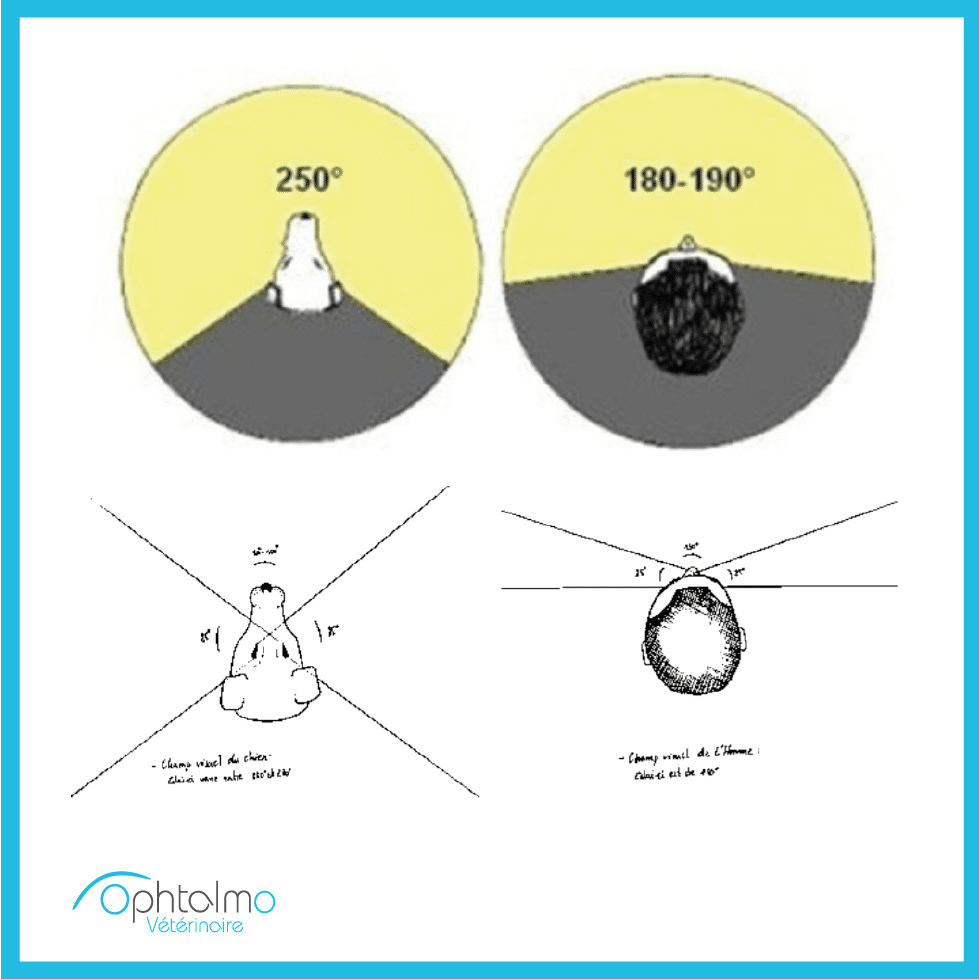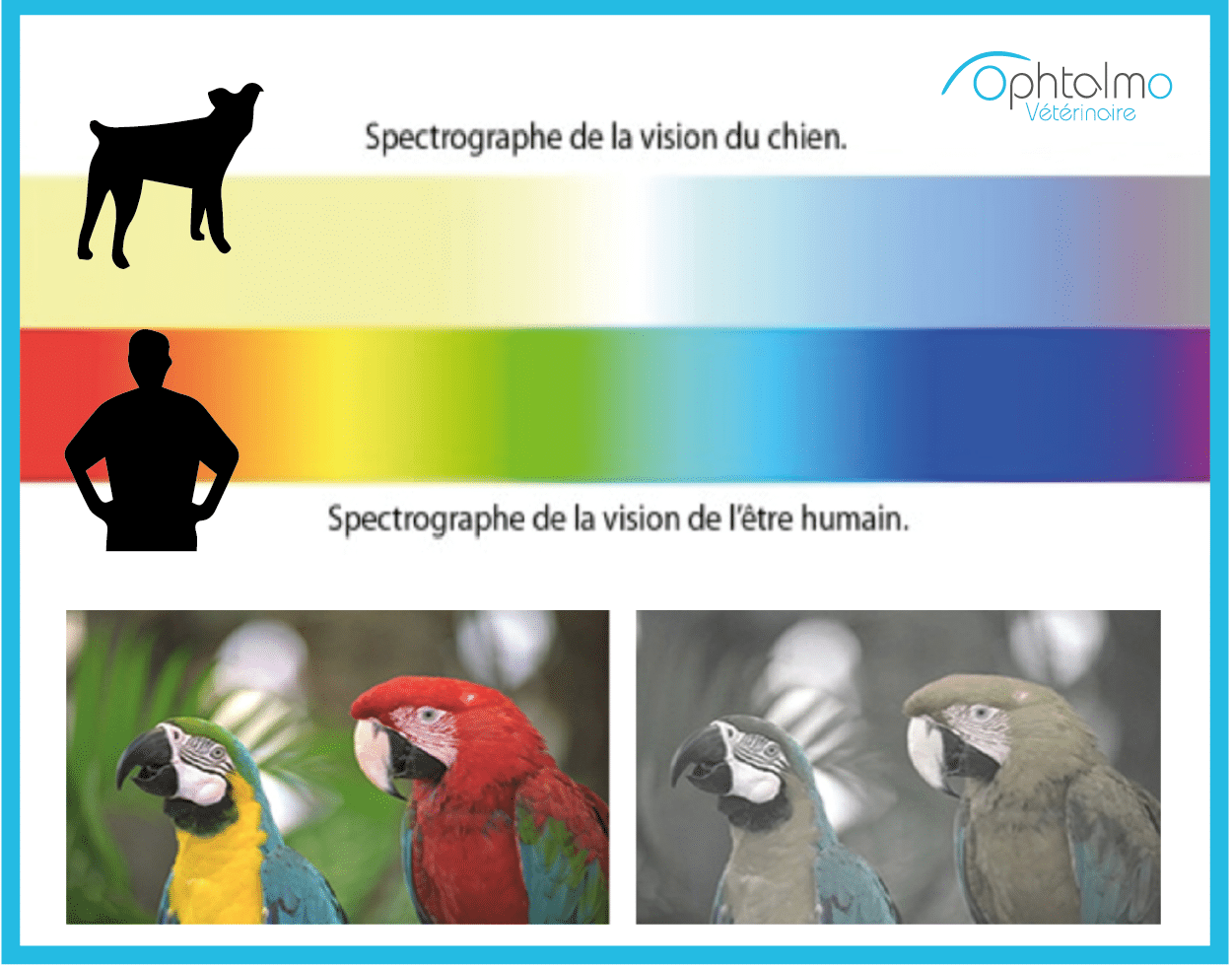Everyone wonders about the vision of their pets. With this document I hope to bring you some answers. The vision includes many factors such as: visual field, depth perception (ability to evaluate a distance), visual acuity (ability to focus), movement perception, color perception. All these components of the vision need to be integrated by the brain to produce an effective vision. Although it is impossible to ask our pets to read a chart to evaluate their vision, the comparative studies allow us to assume some facts about the vision of our pets.
Visual field – The visual field is much larger in dogs than in humans because of the position of the eyeballs, being in a much more lateral position. The visual field covers 250-287° (depending on the breeds) whereas it covers 180 ° in humans.
Depth perception – The visual field simultaneously seen by both eyes is called binocular field. The binocular vision makes possible the perception of depth. The binocular field is reduced in dogs to 80-100 degrees in comparison to the one is human (140 degrees) due to the lateral position of the eyeballs.
Movement perception – Dogs have a peripheral vision larger than humans. That’s the reason why dogs have a better ability to detect motion than humans. On the other hand, dogs see less detail as their central vision is less developed.
Visual acuity – Dogs do not have a fovea or a macula (area of the retina where there is a high concentration of cones, the day receptors of the retina) and the optic nerve of the dog contains much less nervous fibers than the one of the man. That is why we assess the visual acuity of the dog to be 6 times lower than the one of the man.
Night vision – Dogs have a night vision a lot better that man do. There are two main reason for this: dog’s retina contains much more cones (photoreceptors for the night vision) and dog’s eye has one more layer located underneath the retina, the, tapetum lucidum. Or tapetum. This reflective layer under the retina sends back the light towards the retina to stimulate it once more. This layer gives the glossy aspect of the dog’s eye that we can observe by night. The dog retina contains much more cells sensible to the light (cones) than cells detecting colors (cones).
Color perception – Dogs see in colors but they do not see the red and the orange. They see from the green-yellow to the blue-violet because of the two types of cones they have. Their vision is thereof recalled a dichromatic vision. Human and some primates have 3 types of cones that allow them to have a trichromatic vision. In summary, the color vision of dogs is equivalent to the one of a man who is affected by daltonism. Dogs see colors with less contrast and with fewer details than human.


In conclusion, the dog’s vision is quantitatively more developed than the human’s one but qualitatively worst than the human‘s one. This is sufficient enough for its dog’s life!!

